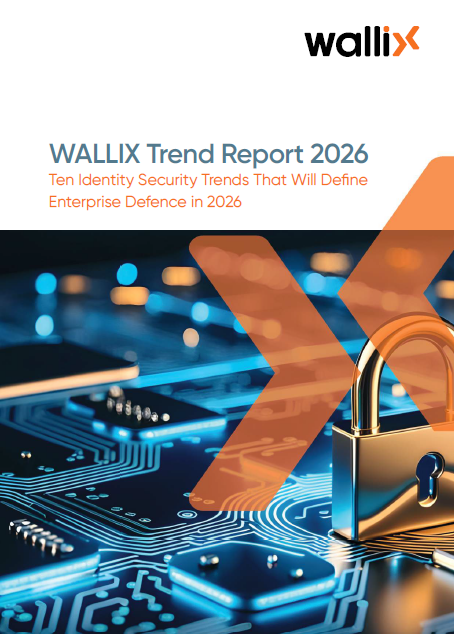Cybersecurity Frameworks and how to choose the right one for your business.
Digital threats aren’t waiting around, and neither should your security strategy. Proper cybersecurity frameworks do more than tick compliance boxes. They fundamentally transform how organizations protect themselves.
Real Business Impact of Security Frameworks
Gone are the days when essential antivirus software cut it. Modern threats require structured defenses that work in practice, not just theory.
Good frameworks prevent system breaches, patch vulnerabilities before exploitation, and ensure regulatory compliance without excessive paperwork. Implementing PAM for compliance becomes essential as frameworks require strict oversight of privileged accounts and administrative access.They protect sensitive data through practical, repeatable processes rather than hoping nothing bad happens.
Frameworks That Deliver Results
NIST 2.0 has earned its reputation through practical application, not marketing. Its six functions create a workable security cycle that scales surprisingly well. Mid-sized manufacturers find it just as applicable as enterprise tech firms. The documentation requirements are substantial but manageable with the right approach.
ISO 27001 demands rigorous documentation, which initially frustrates many organizations. However, this rigor exposes hidden vulnerabilities faster than almost any other approach. Successful information security standard adoption requires particular attention to privileged access controls within the documentation framework. During their gap assessment, one telecommunications client discovered critical database exposures that had existed undetected for years.
CIS Controls cuts through theory with actionable directives. CIS offers immediate value for resource-constrained teams without philosophical discussions about risk postures. The implementation guides alone justify its adoption.
SOC2 gets results in financial sectors where trust matters more than technical sophistication. Its audit process reveals operational gaps that technical scans often miss.
PCI-DSS isn’t optional for payment handlers. Beyond compliance, it addresses payment-specific threats through concrete requirements rather than abstract principles. The quarterly scanning requirements catch configuration drift that would otherwise go unnoticed.
COBIT bridges technical and business languages better than competitors. Unlike frameworks that isolate security in technical silos, COBIT connects security investments to actual business outcomes. This matters when justifying budgets to non-technical executives.
HITRUST CSF saves healthcare organizations from framework fatigue by consolidating multiple regulatory requirements. The certification process is demanding but eliminates duplicate compliance efforts.
CCM tackles cloud security with specificity that other frameworks lack. Organizations moving critical workloads to cloud environments find its control mapping invaluable for maintaining consistent security across hybrid environments.
CMMC 2.0 creates a genuine security roadmap for defense contractors. The five maturity levels provide clear progression paths while acknowledging that security evolves rather than appearing overnight.
Cyber Essentials gives smaller businesses a practical starting point without overwhelming them. UK organizations value its straightforward certification process as a competitive differentiator with minimal overhead.
DORA bridges the persistent gap between development speed and security requirements. Connecting security metrics to operational performance prevents the all-too-common problem where security becomes the department of “no.”
GDPR transcends simple compliance to provide a comprehensive data protection framework. While European in origin, its influence extends globally. European organizations must also consider NIS2 directive adherence when implementing comprehensive cybersecurity frameworks alongside GDPR requirements.. Organizations scrambling to meet GDPR requirements often discover hidden data flows and processing activities that create unexpected security vulnerabilities. The documentation demands are substantial but force critical data mapping that many organizations would otherwise neglect.
MITRE ATT&CK documents how attackers operate in the wild. Security teams use it to validate defenses against genuine tactics rather than theoretical threats. The regular updates reflect emerging attack patterns faster than most threat intelligence services.
FAIR quantifies security risks in financial terms, turning nebulous threats into budget discussions executives understand. When competing for resources against revenue-generating initiatives, FAIR provides security teams with the financial vocabulary needed to win funding.
SABSA tackles security architecture holistically, ensuring protection measures support business functions rather than hindering them. Unlike frameworks focused solely on controls, SABSA begins with business requirements and builds security to match.
Picking what works for your organization
Framework selection isn’t one-size-fits-all. Your industry, data sensitivity, regulatory environment, and threat exposure should drive the decision. Most organizations I’ve advised implement pieces of multiple frameworks rather than a single approach wholesale.
The critical factor? Your framework must support business operations without unnecessary friction while addressing genuine risks. Perfect security that prevents work accomplishes nothing.
Practical Risk Reduction
Frameworks reduce risk through structure and consistency. They establish controls that don’t depend on institutional memory or individual expertise, making security repeatable across the organization. Effective administrative access governance ensures that framework implementation maintains consistency across all privileged operations and critical system access.
The best implementations acknowledge that security incidents will eventually occur despite preventive measures. They establish incident response procedures tested through regular tabletop exercises and technical drills. They include recovery processes designed through practical experience rather than optimistic assumptions.
Regular monitoring catches anomalies human observers miss.
Getting Implementation Right
The implementation makes or breaks security frameworks. Start by honestly assessing your current security posture. Skip the consultant talk and document where you stand today. Then, develop an implementation roadmap that tackles critical vulnerabilities first while building momentum through quick wins.
Schedule assessments quarterly rather than annually. Annual reviews create security theater, while quarterly checks catch drift before they become catastrophic. These reviews should identify improvement opportunities, not just compliance failures.
Most importantly, accept that implementation takes time. Perfect security doesn’t exist, and pretending otherwise wastes resources that could be spent on genuine risk reduction.
Frameworks without cultural change accomplish little. Technical controls won’t save organizations where security is treated as an afterthought or compliance exercise.
As threats grow more sophisticated, the discipline of formal frameworks becomes non-negotiable. Organizations that embrace this structure don’t just react to threats – they anticipate them, preparing defenses before attacks materialize.
Related resources
-
 WALLIX Trend Report 2026: The Identity Security Shifts Redefining Enterprise...
WALLIX Trend Report 2026: The Identity Security Shifts Redefining Enterprise...




